There’s no hiding place here for the Holden Commodore VXR. The development vehicle excuses, the pre-launch PR bluster and any residual extended goodwill end right here.
We’ve driven pre-production versions of the ZB Commodore VXR but this is the first time we’ve pitched it in against its toughest rivals. If you’ve read the 3000km drive to Bourke and back in the February issue, you’ll know that we harboured a few reservations about this car, most specifically in the way the 3.6-litre V6 engine (which can trace its ‘High Feature’ lineage back to the 2004 VZ Commodore) interfaces with GM’s nine-speed transmission.
Given that there aren’t any normally aspirated, all-wheel drive cars in this price bracket with which to directly compare it, we’ve taken a slightly different tack. For a nominal budget of 60 to 70 grand, we’ve lined up three alternatives that tease the formula out in different directions. Looking for more grunt? The 272kW Kia Stinger GT certainly answers that call. A bit more in the way of badge equity? Look no further than Jaguar’s XE 25t. Or how about more space? The Skoda Superb Sportline 206 TSI 4×4 offers limo-like legroom and a certain low-key discretion. Game on.
If the definition of insanity is doing the same thing over and over again and expecting different results, then perhaps we have a screw or two loose. Each time we punt Holden’s Commodore VXR through the same corner, it seems to do something dissimilar. At first it’s perplexing but upon consideration, it’s apparent what’s going on. A multiplying avalanche of variables thrown at the car’s ECU by the Twinster all-wheel-drive chassis, stability-control system and nine-speed auto means that what might feel the same to us is a markedly different proposal to the VXR’s algorithm set. Hook it all up, feel the diff tweaking drive to the outside rear, the transmission plugging into four and a half grand, and it feels rock star. Miss that datum by a nanometre and you can be left with a lugging, understeering lump. It’s never dull, that’s for sure.
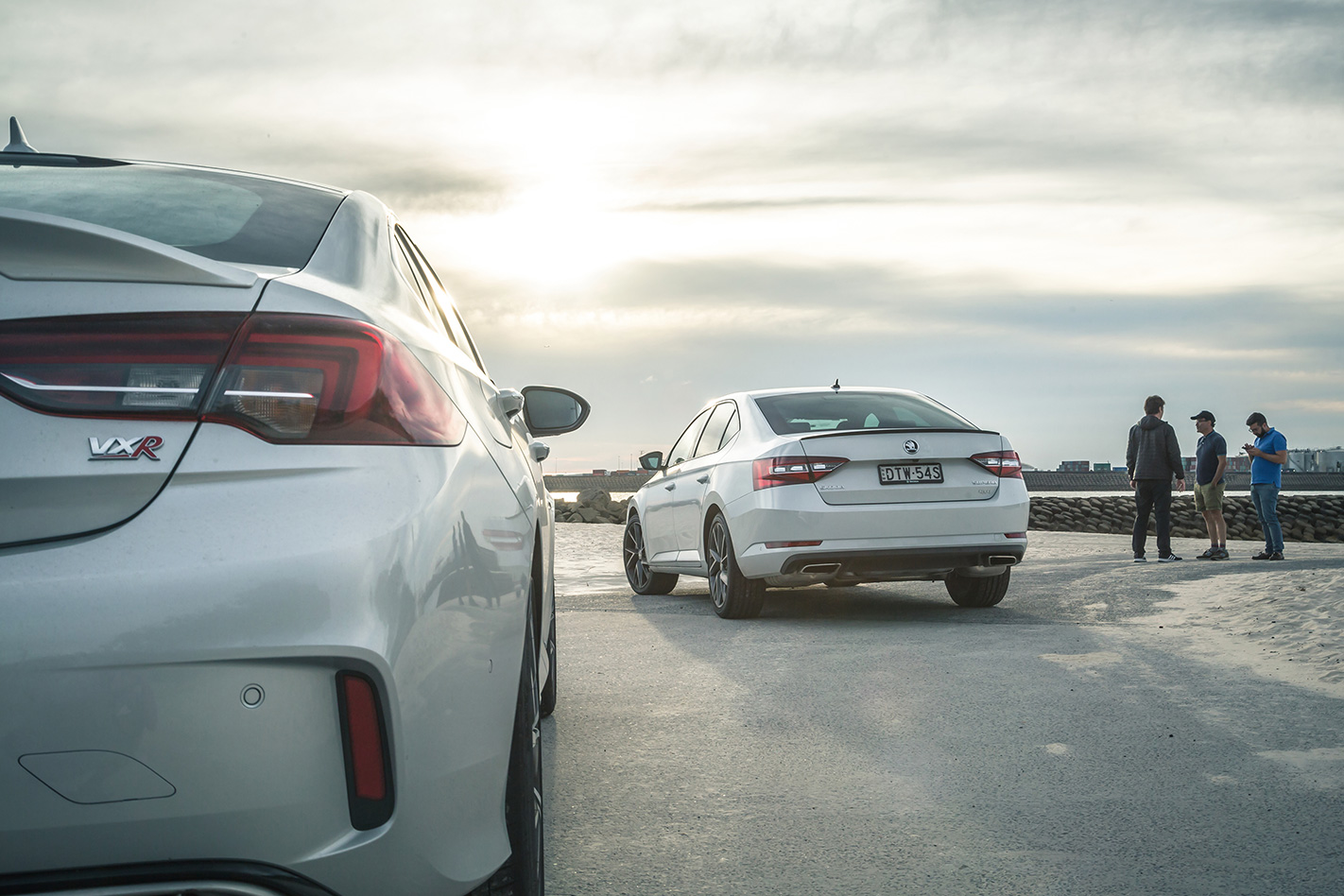
The most money also buys you the least ponies. With just 184kW under the bonnet from its turbocharged 2.0-litre Ingenium four, the Jag’s engine has that slight whiff of crippleware about it given that the ostensibly similar 30t version develops a rippling 221kW. With 137kg less than the Holden to haul and a mighty front end, Skoda’s all-wheel drive 206kW Superb might just have the cross-country chops to put some manners on the VXR. The twin-turbo Stinger is a known quantity and acts as the enthusiast’s benchmark in this class.
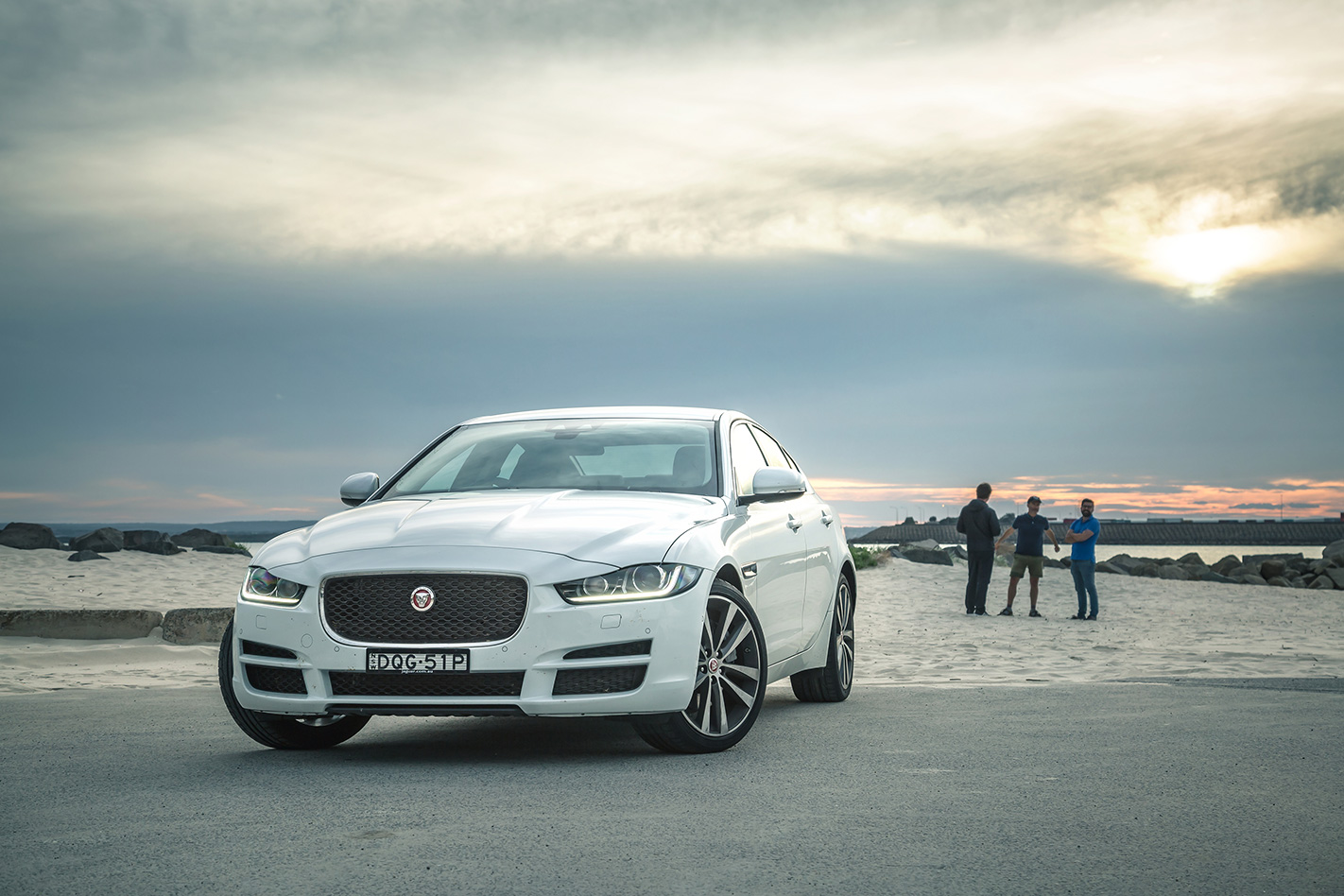
The thousand kilometre two-day drive route ought to answer that question. Day one sees us run from Sydney over the Blue Mountains and into a massive figure-eight pivoting around Bathurst. Dynamic assessments complete, the second day sees photography duties undertaken south of Sydney on the run down to Wollongong and back, giving us the opportunity to perform interior assessments.
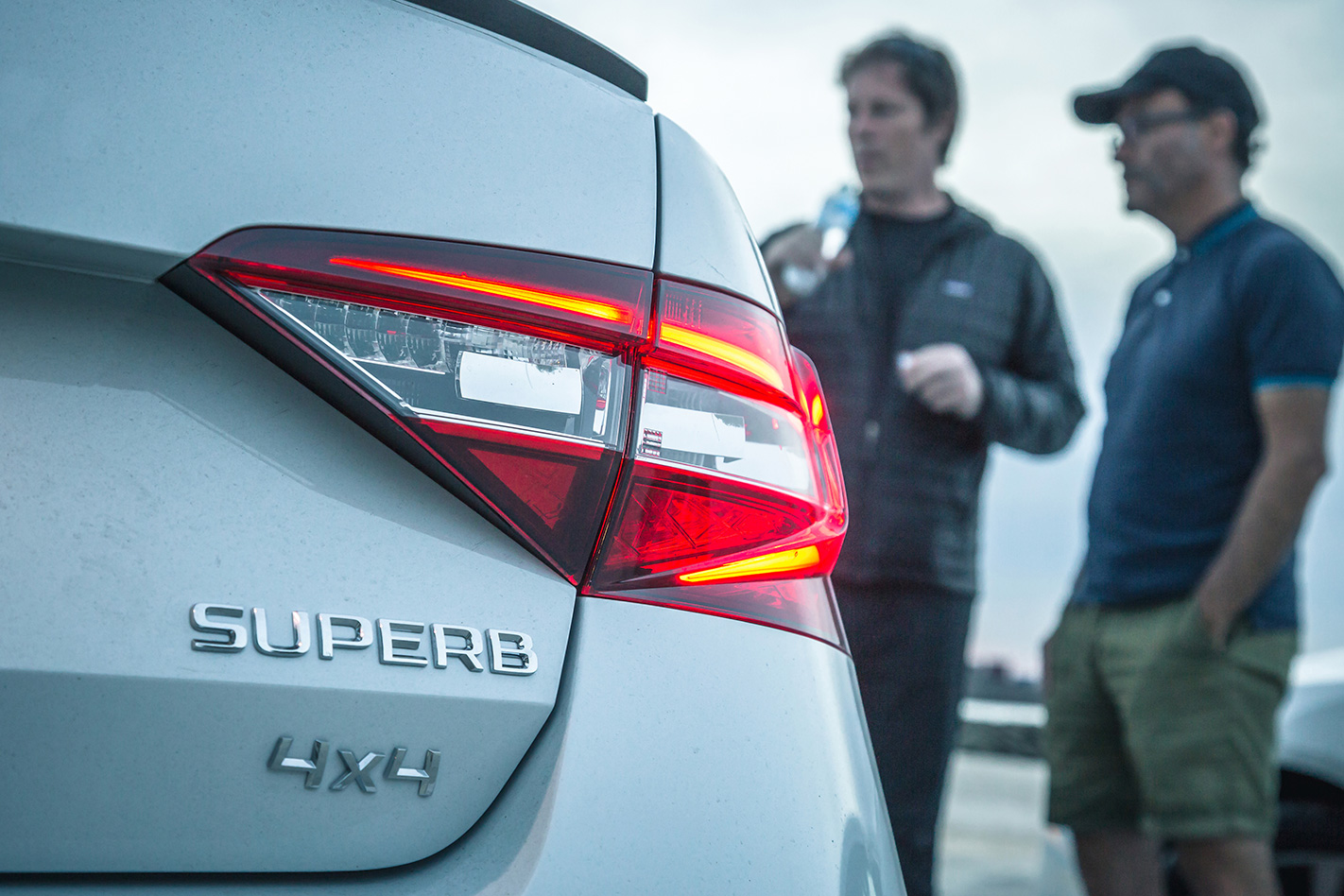
The Jaguar feels the Skoda’s polar opposite. Its chassis is clearly the fruit of engineers with a nuanced understanding of vehicle dynamics, its steering rich in feedback, its power delivery a case study in doing more with less. Even in this company, the engine feels sweet and fluid, this low-kay unit freeing up noticeably over the course of the test. Dynamically, it’s fairly easy to see where your additional outlay is going. It’s not perfect, though. The suspension feels impeccable under compression, but in rebound it can betray a lack of polish. Likewise the eight-speed ZF 8HP transmission – unusually for this ’box – can be caught on the hop with sharp throttle demands, sometimes finding itself behind the eight-ball and hurriedly making amends without its normal silky torque-converter slur.
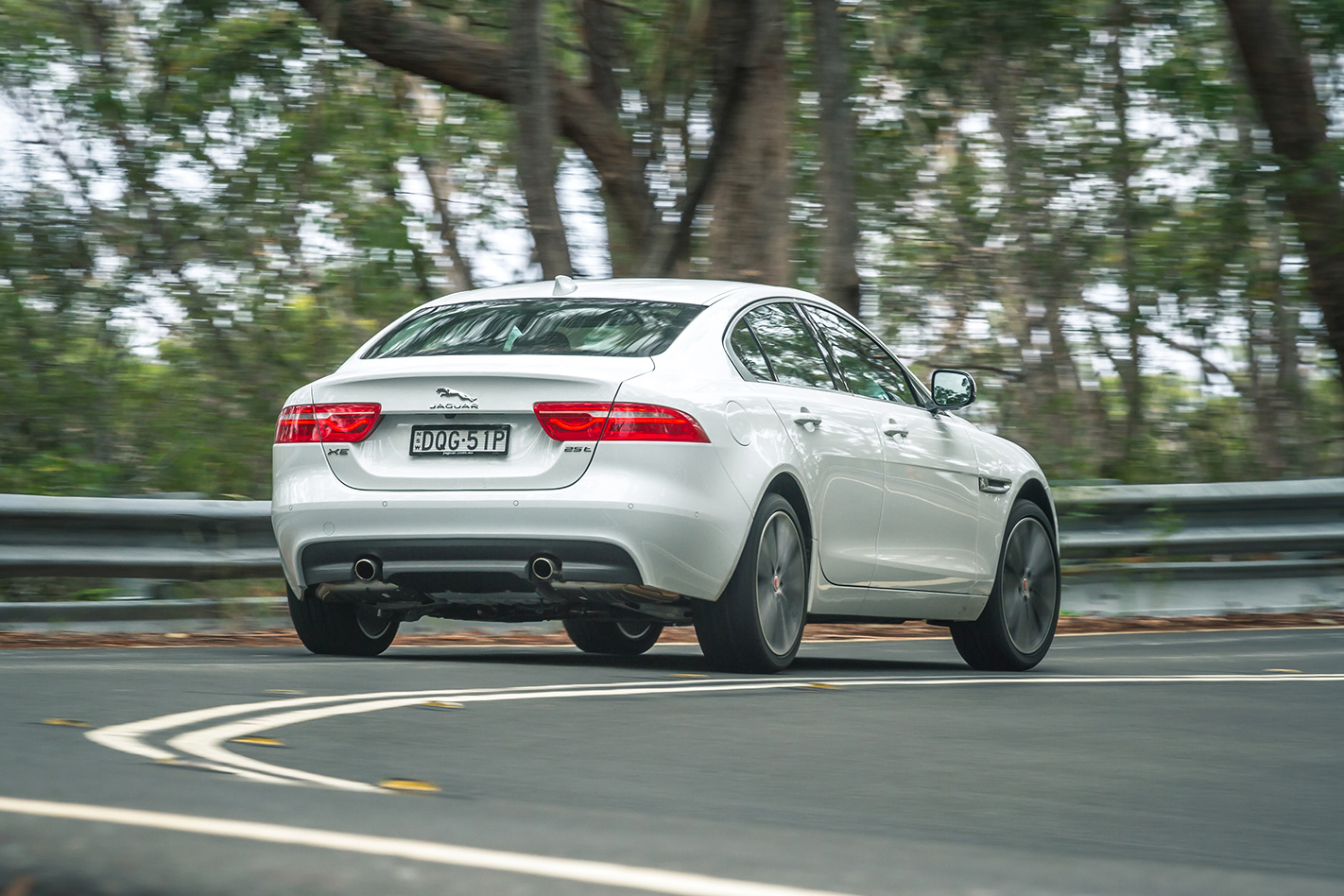
The Stinger carries nothing in the way of historical baggage. For a clean sheet, first-crack design, it’s little short of amazing. The chassis is certainly not the last word in sophistication, being the only one of the quartet that possibly wants for something in terms of torsional rigidity, but the sheer muscularity of the 3.3-litre twin-turbo V6 buys it all sorts of credit and offers the keen driver all manner of options. The eight-speed transmission doesn’t have a whole lot of head-scratching to do to make the most of a torque ‘curve’ that’s pegged at 510Nm all the way from 1300 to 4500rpm. It’s effortlessly rapid almost everywhere, although it can feel a little unwieldy when the going gets really twisty, rapid progress being an exercise in managing oversteer.
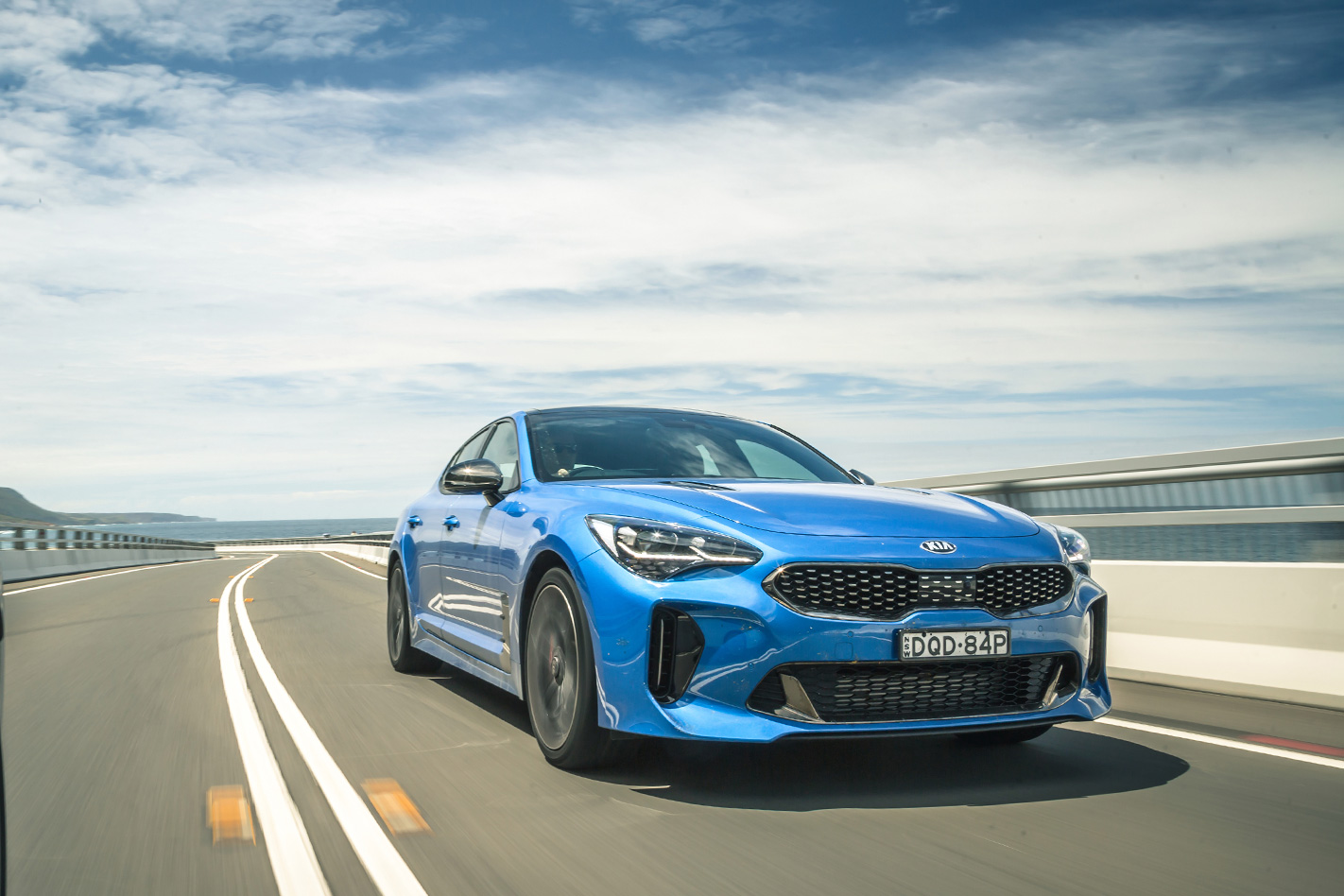
That might sound a fairly fundamental criticism, but giving the Stinger time to compose itself before any significant deviation from stasis is enough to provide some welcome reassurance. You let the car settle into a corner, and gradually feed throttle and steering.
Launch it into a change of direction with a big clog and an armful of steering and it can feel clumsy. Be a little more sympathetic with it and you can really work into a decent flow. For a car with variable-ratio electric steering, adaptive dampers, five drive modes and an eight-speed auto that can’t be locked into manual mode, the Stinger GT feels agreeably analogue.
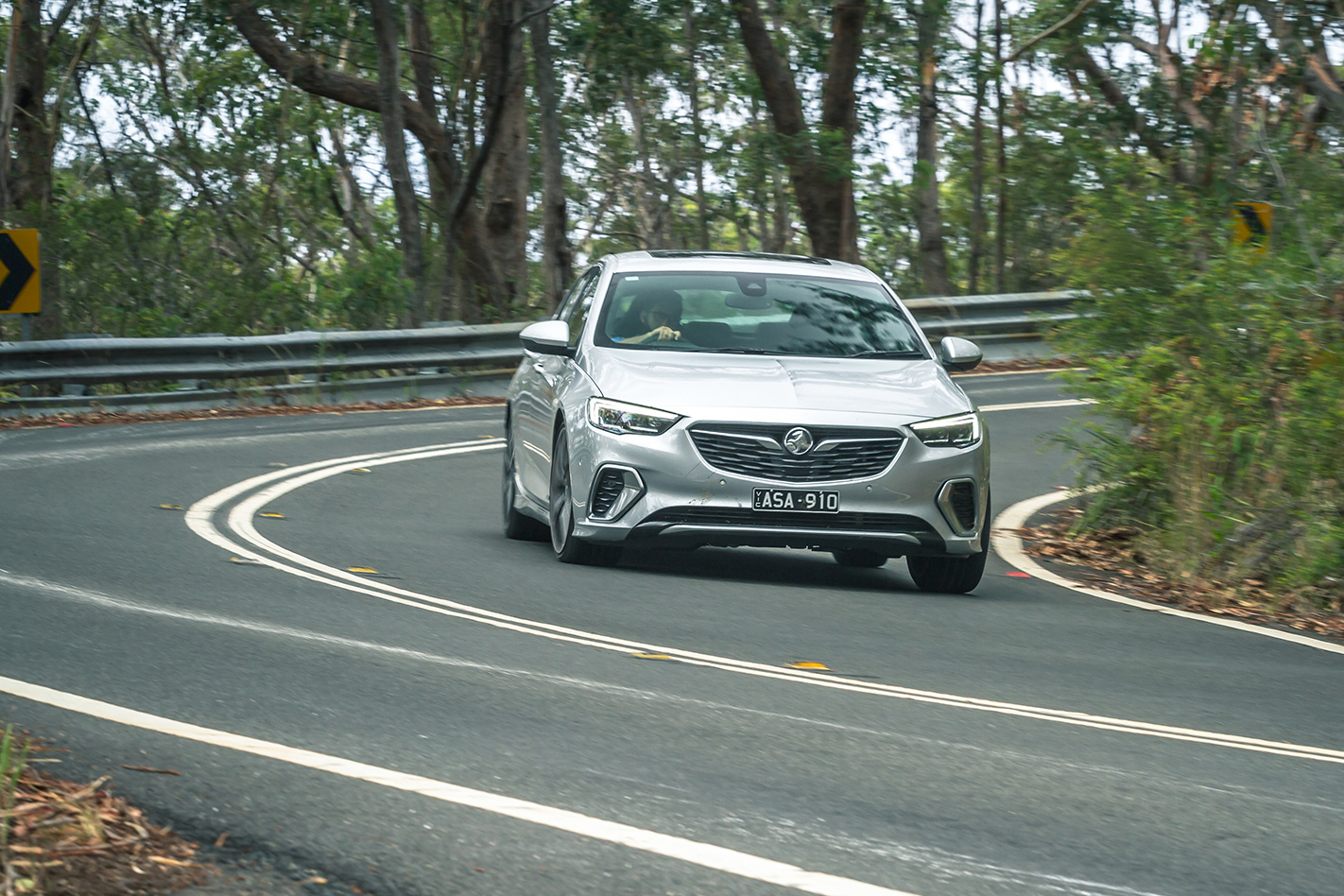
All too often, frustration then gets the better of you and you find yourself trying to shift a nine-speed ’box manually. That requires some mental adjustment, given this is a vehicle that’s revving at 3400rpm in order to maintain 100km/h in sixth whereas most cars are barely ticking over at that speed. The suspicion grows that Holden has pushed for this V6 because a Commodore range comprised entirely of four-cylinder engines would be even more unpalatable to a sceptical Australian public. Yet the torque-deficient V6 emerges as a less favourable option – from a driver’s perspective at least – than a decent turbo four; a true instance of needing to be careful what you wish for.
This fairly fundamental mismatch between engine and transmission mars what is otherwise a promising package. The spec sheet of the VXR knocks every other car here for six, making the Skoda look especially mean. Buy the Superb 206 TSI Sportline and you might well wonder what happened to niceties like a sunroof, heated rear seats and a head-up display that are standard fit on the Commodore, let alone the adaptive LED matrix headlights that do the same trick as top-line Mercedes-Benz and Audi units in keeping oncoming cars in a moving cone of dipped beam while retaining high-beam intensity elsewhere. The there’s the VXR’s Brembo brakes, 20-inch alloys, adaptive damping and premium Bose audio. Simply clever? The Skoda looks merely simple by comparison.

The Superb’s effortlessly intuitive infotainment installation knocks spots off Holden’s MyLink system, both visually and from a useability standpoint. Likewise, the rest of the Commodore’s cabin feels blue-collar made good. You don’t have to look hard to spot hard wearing, workmanlike materials. The front seats are a standout, though, with power side bolsters, a low hip point for an electrically adjustable chair, heating and cooling, as well as plenty of lateral support, albeit better at hip height than upper body. Surprisingly, the Commodore is the only one of the bunch without power assistance for the boot or tailgate, although it’s a $900 option on the Jaguar.
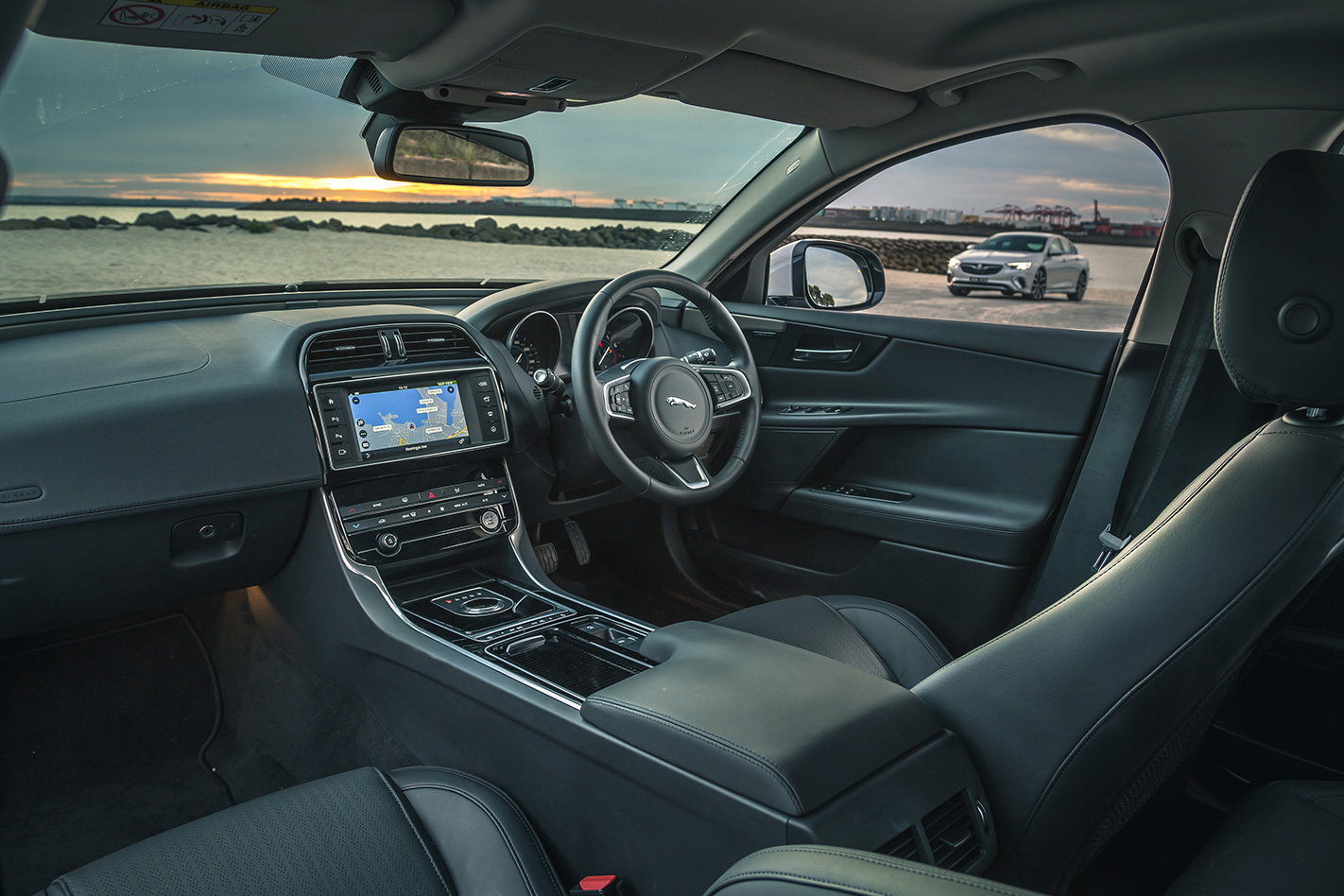
You expect the rear seat to be tight in the XE but it makes the most of available space, with cut-outs on the backs of the front seats and enough clearance to nestle your toes under the front chairs. The baby Jag is actually 6mm longer in wheelbase than the Commodore, but Holden has worked the ball of foot to front-wheel ratio rather cleverly, extending the passenger cell accordingly. Rear headroom in the Jaguar isn’t bad either, and the XE surprises again by being almost as wide as the Holden and Skoda, despite being the shortest of the bunch by over 100mm.
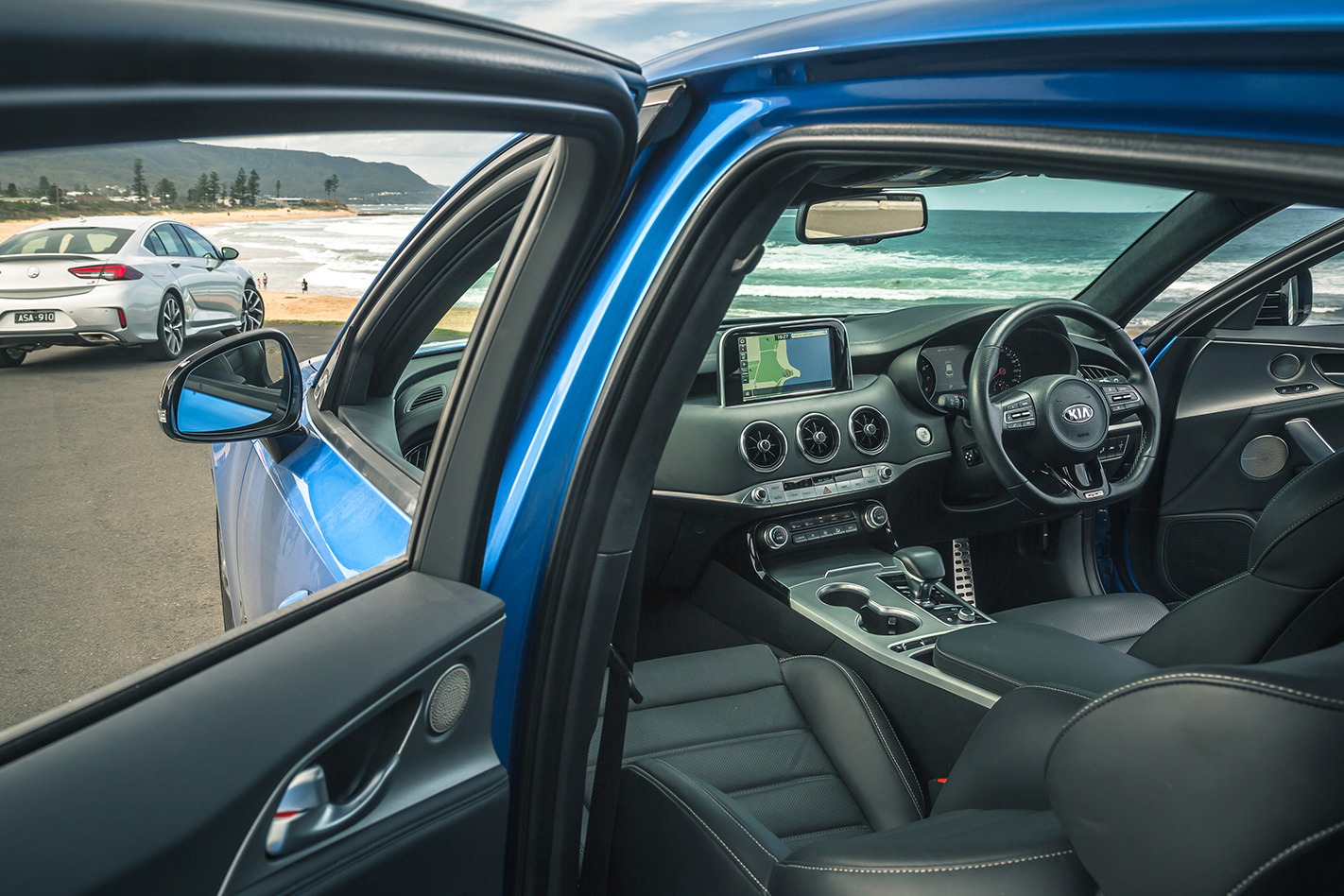
The Stinger is generously equipped too, to the extent that our test car didn’t have a single extra-cost option fitted to it. Our Micro Blue GT is exactly what you’d get if you walked into the dealer, handed over the minimum agreed amount and drove away. And, to be honest, you’re not left wanting.
Arriving at a finishing order for these four isn’t easy, though deciding on the top two and bottom two didn’t tax us for too long. The Skoda washes up an honourable fourth. It’s a genuinely rapid vehicle on almost any road you could imagine but at this price point it’s just too sparsely equipped and anodyne. It never feels either convincingly sporty or particularly good fun, which condemns it to the wooden-spoon position in this quartet. It’s spacious and easy to live with, but saving $5K and landing the non-Sportline version would bolster the Superb 206 TSI 4×4’s Q-car credentials.
The Commodore VXR finishes third. Its gearbox and engine combination are a disappointment. Factor in fuel consumption that was markedly the worst on test, underwhelming exterior styling and a cabin that has a little too much of a toner cartridge sales rep feel about it and even its clever chassis tech, astonishing kit list and generous accommodation can’t salvage its chances. That said, we suspect that the VXR is a weak link in the current Commodore line-up. Would this position have changed with a 250kW torque-rich turbo four beneath the bonnet? In all likelihood, yes.

The big hitter of the group also has other qualities aside from its power advantage. Its seven-year warranty can’t be overlooked, and nor can the fact that to specify an XE to anywhere near the Kia’s level would probably see the final invoice running to six figures. So we’re going Stinger. And the Commodore VXR? It puts in a big effort and offers an interesting blend of talents but, in this company at least, feels unresolved in its execution. Nice try, but it’s a swing and a miss for us.






